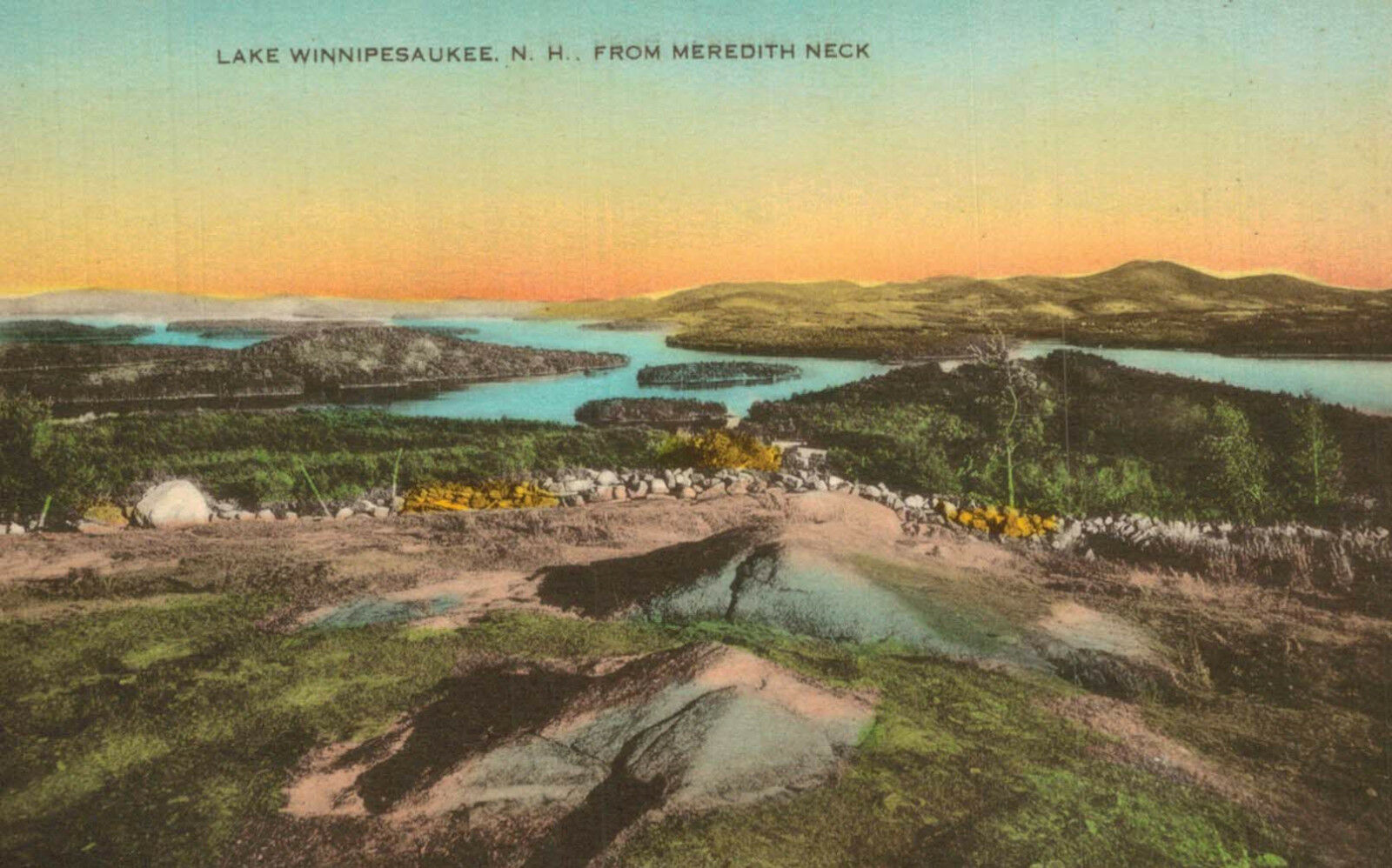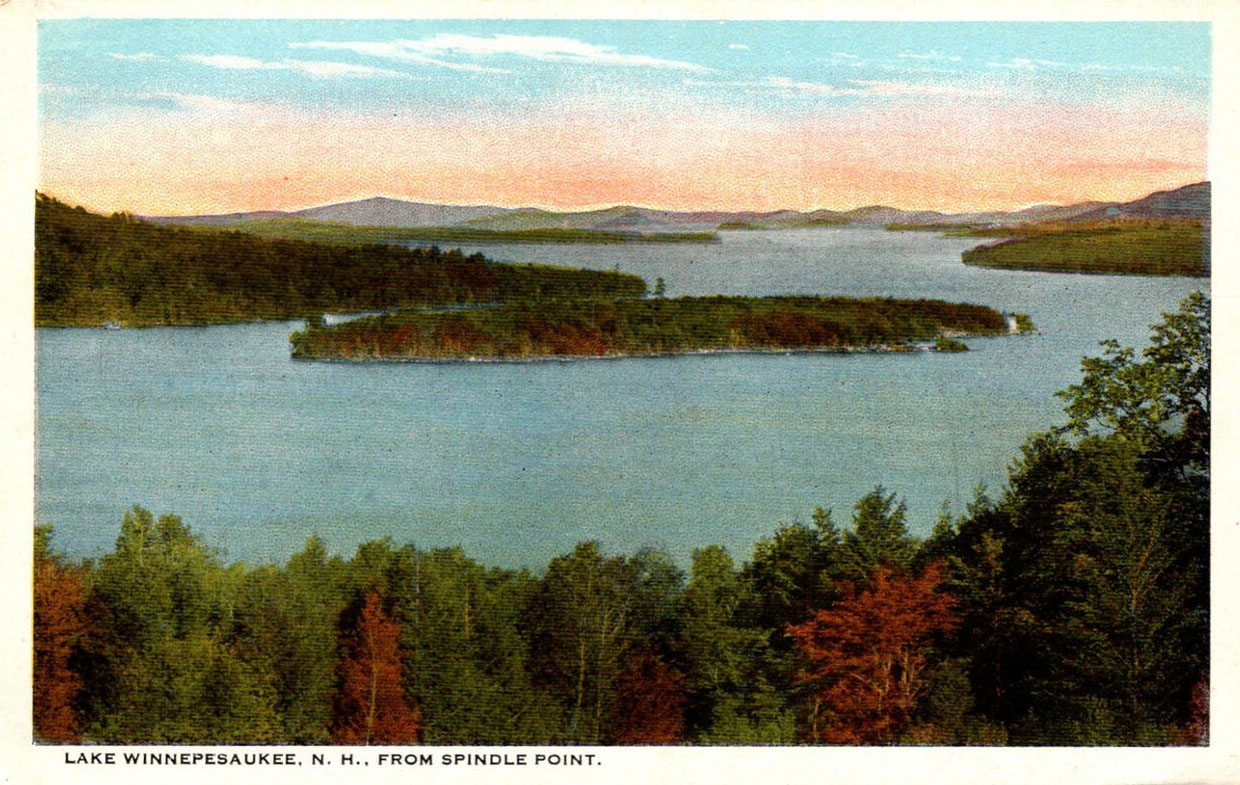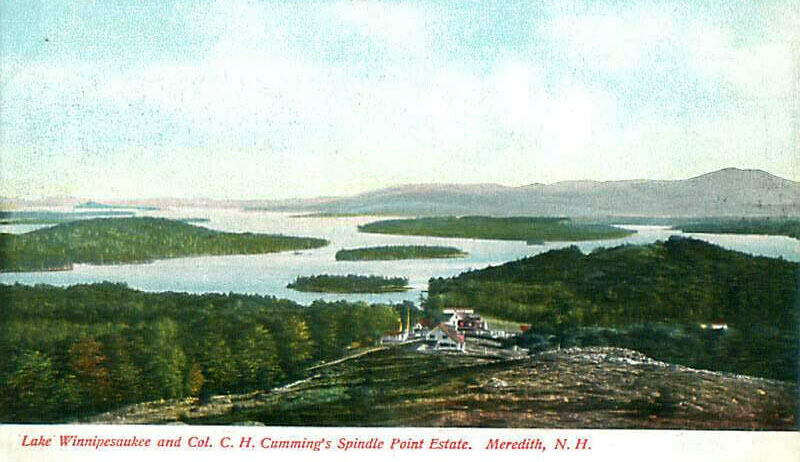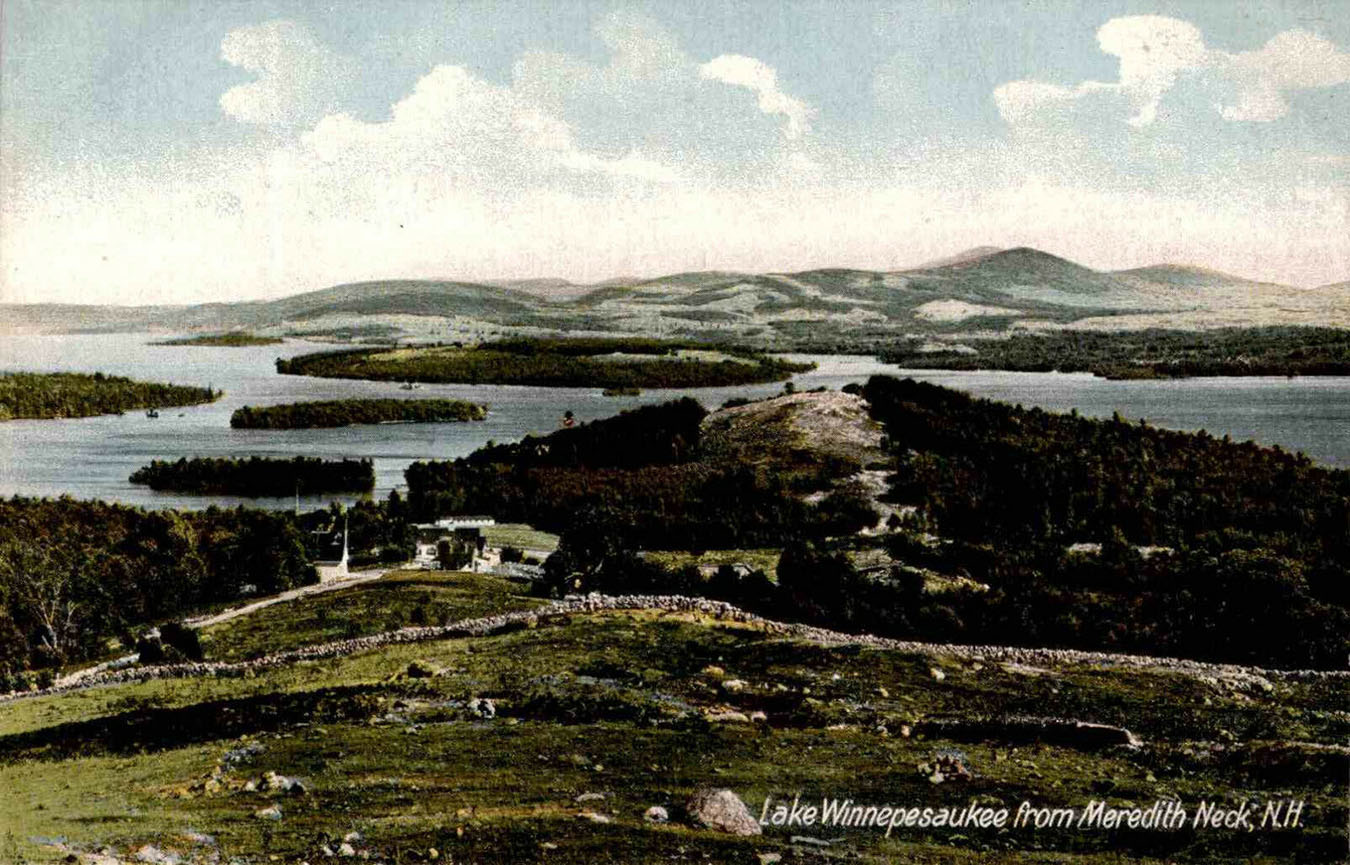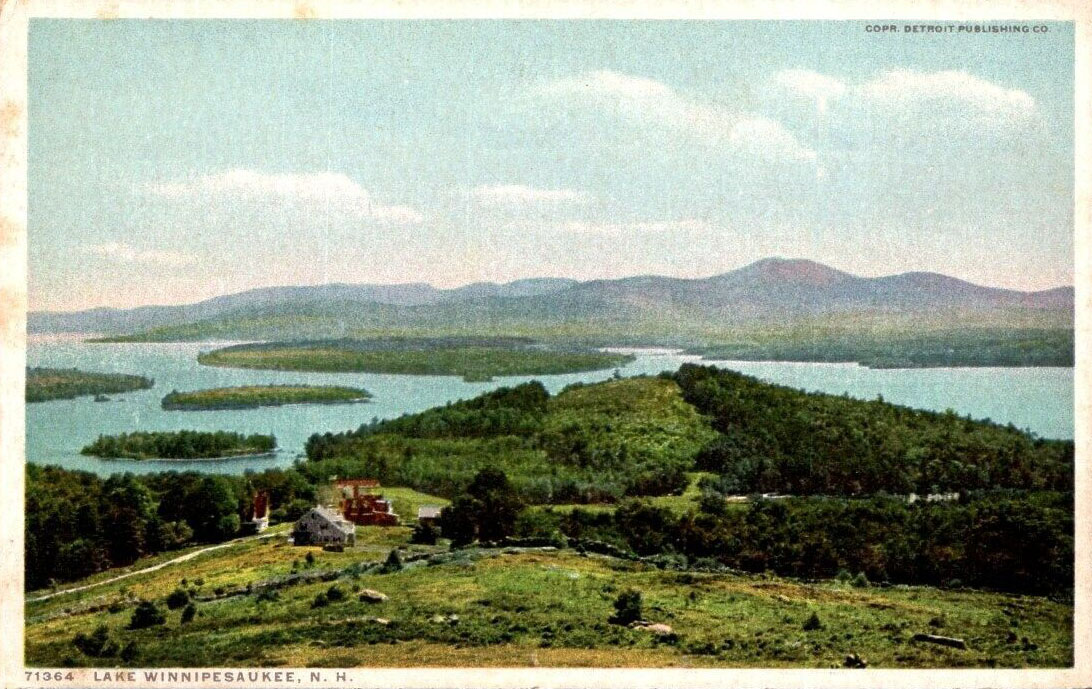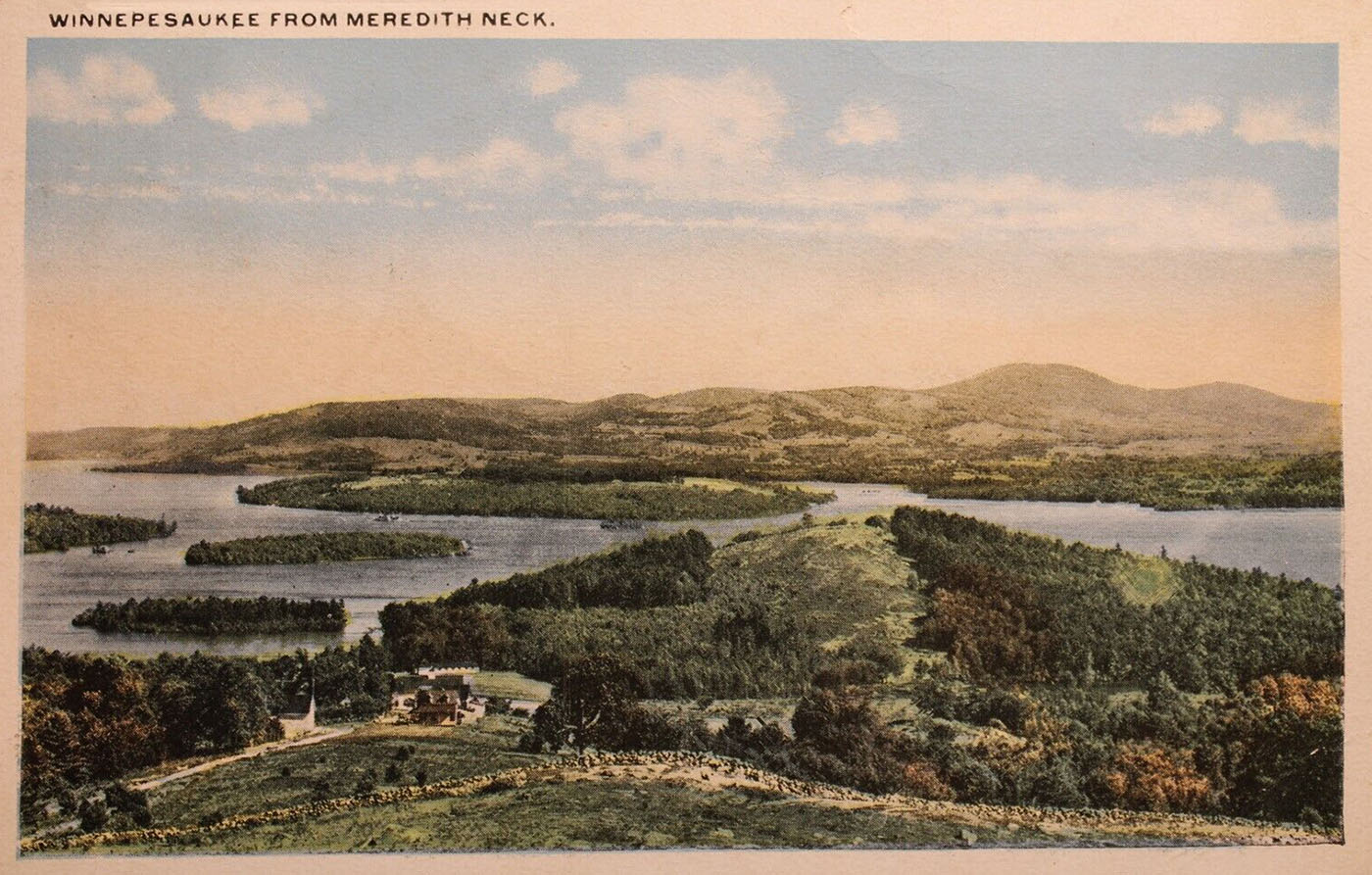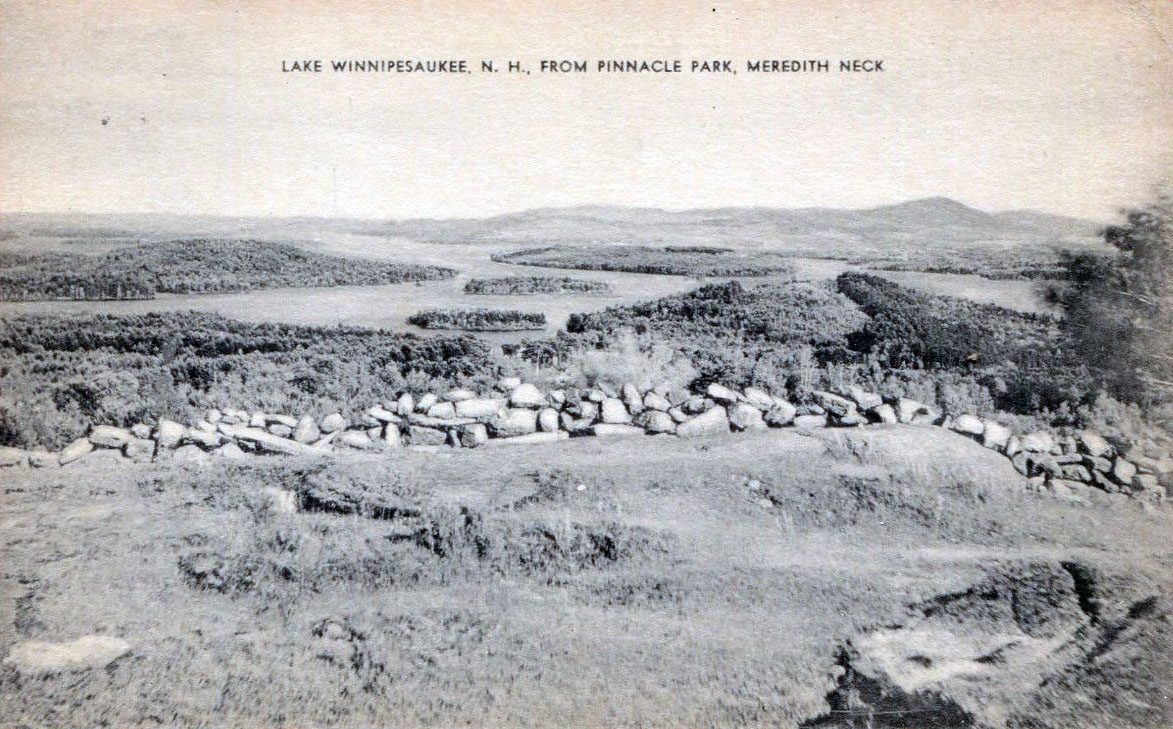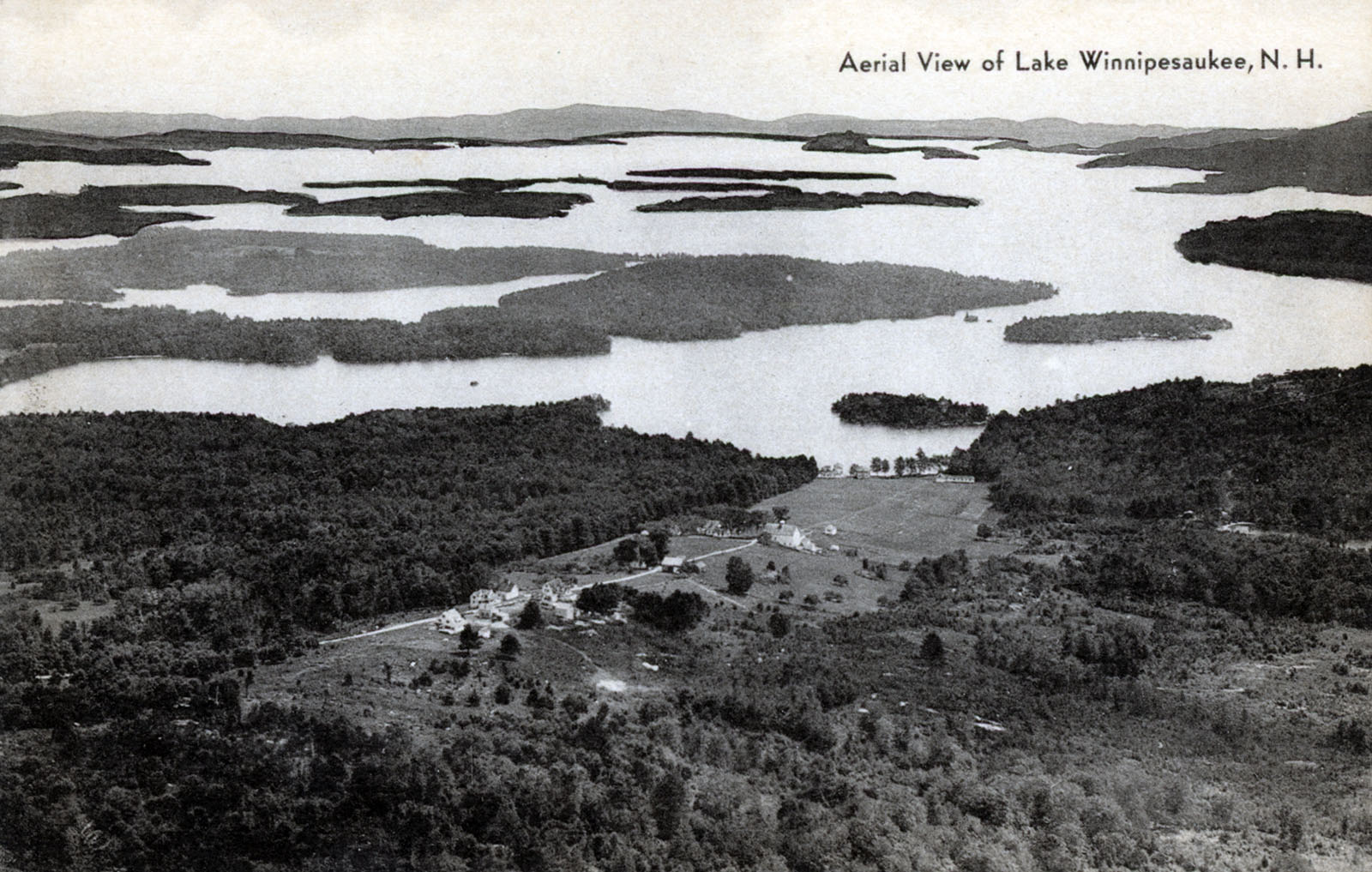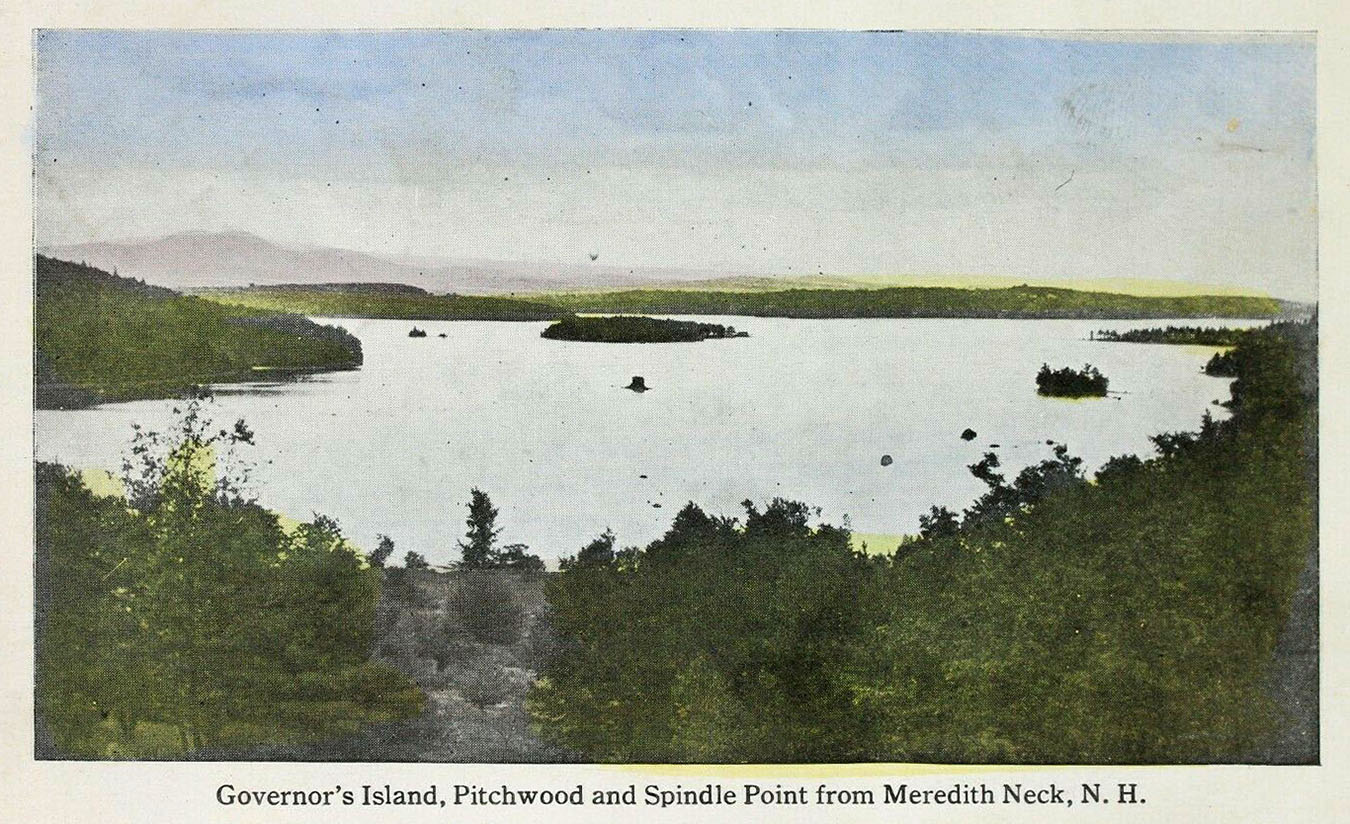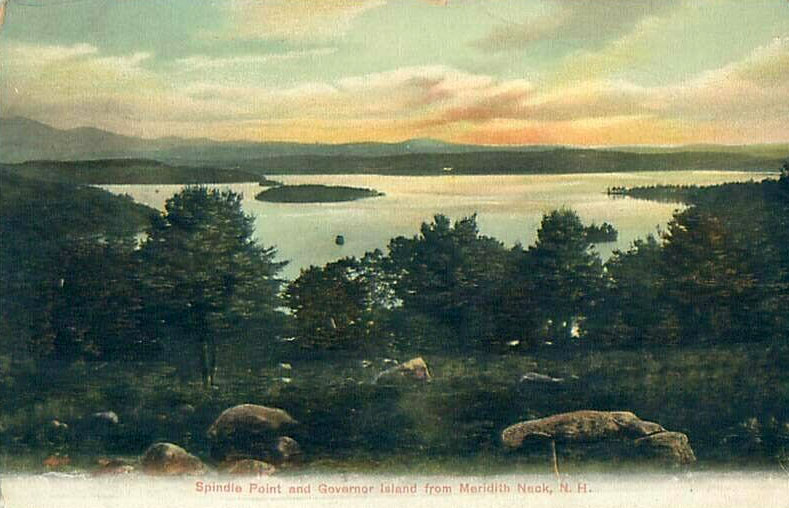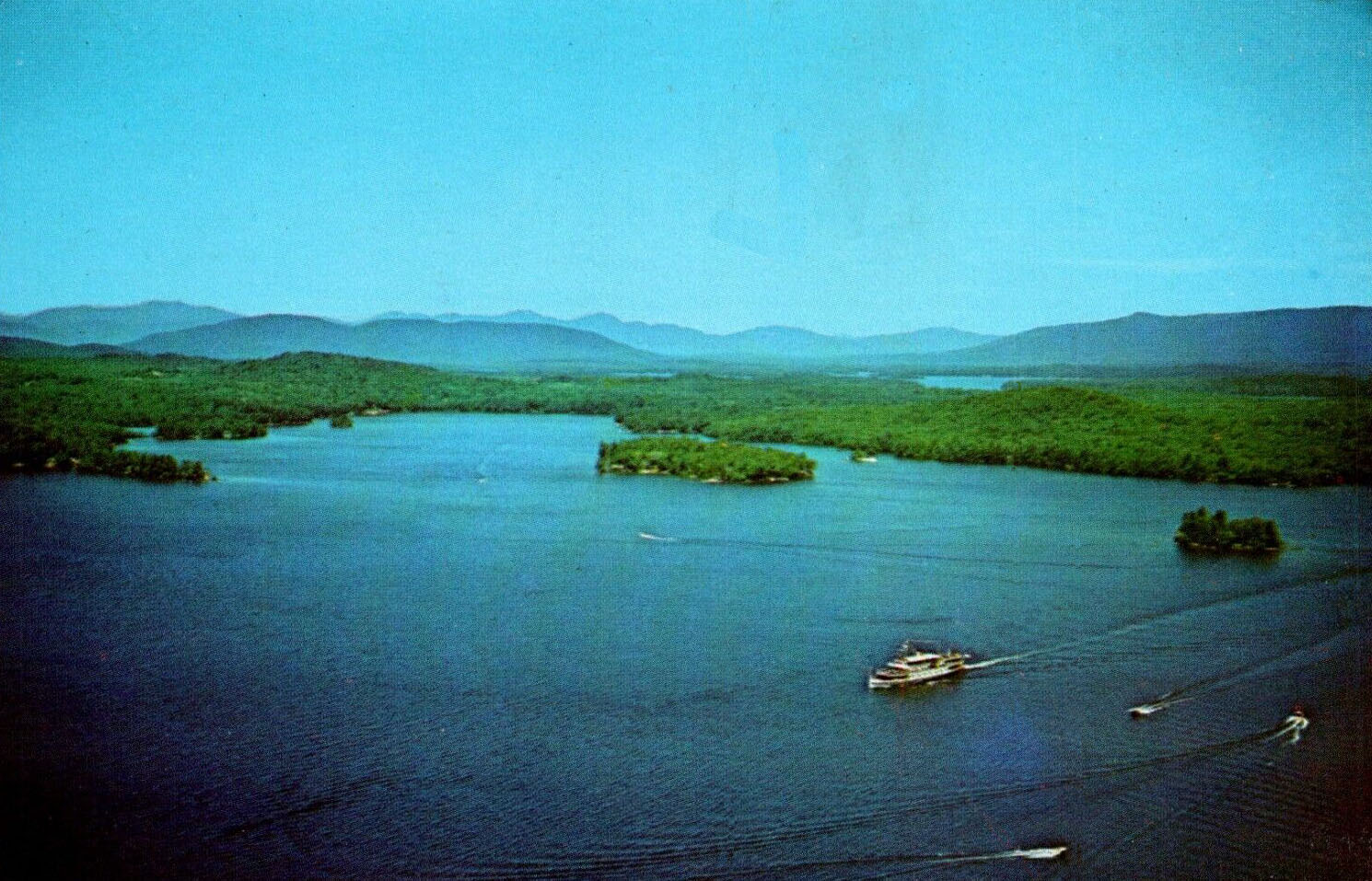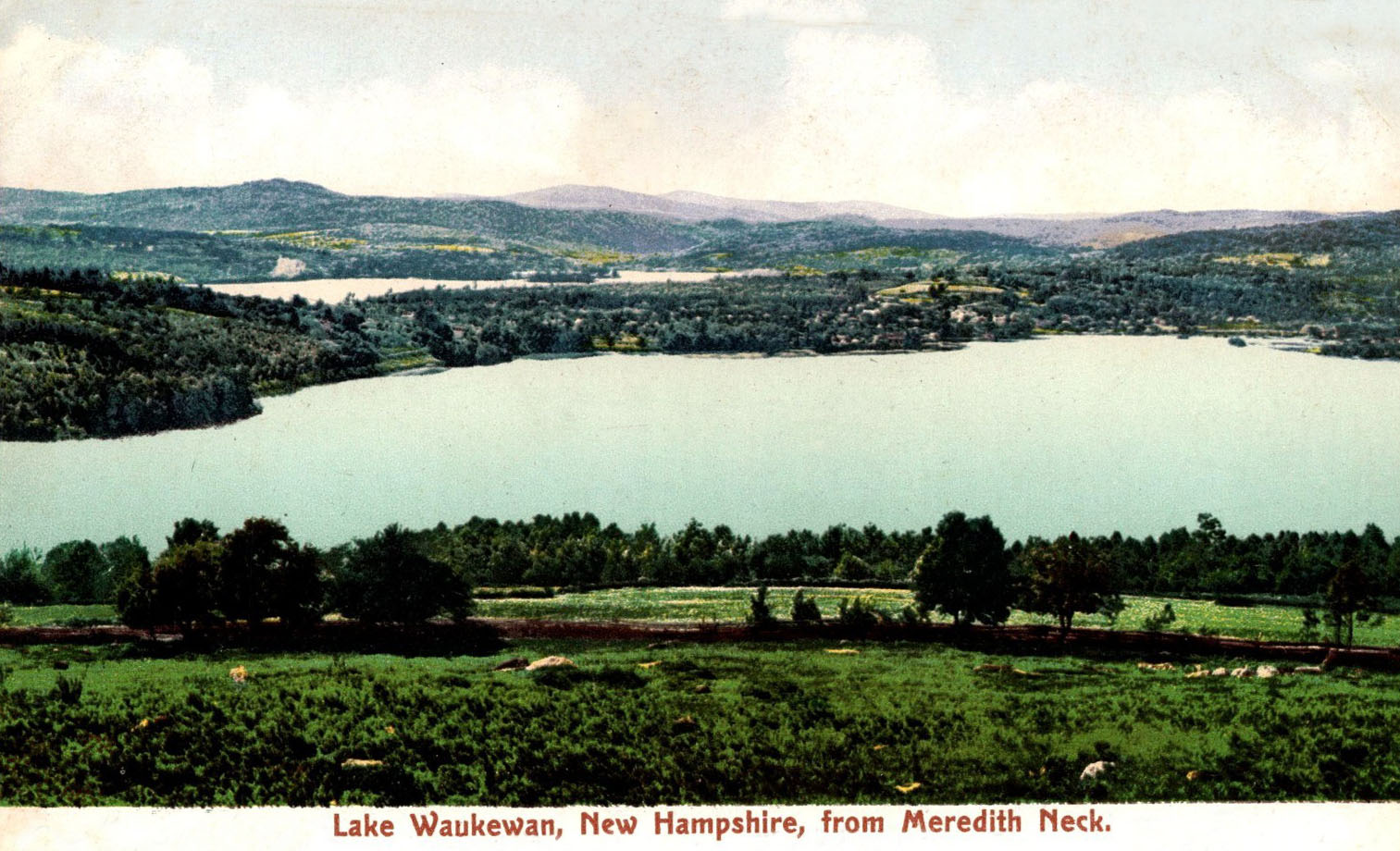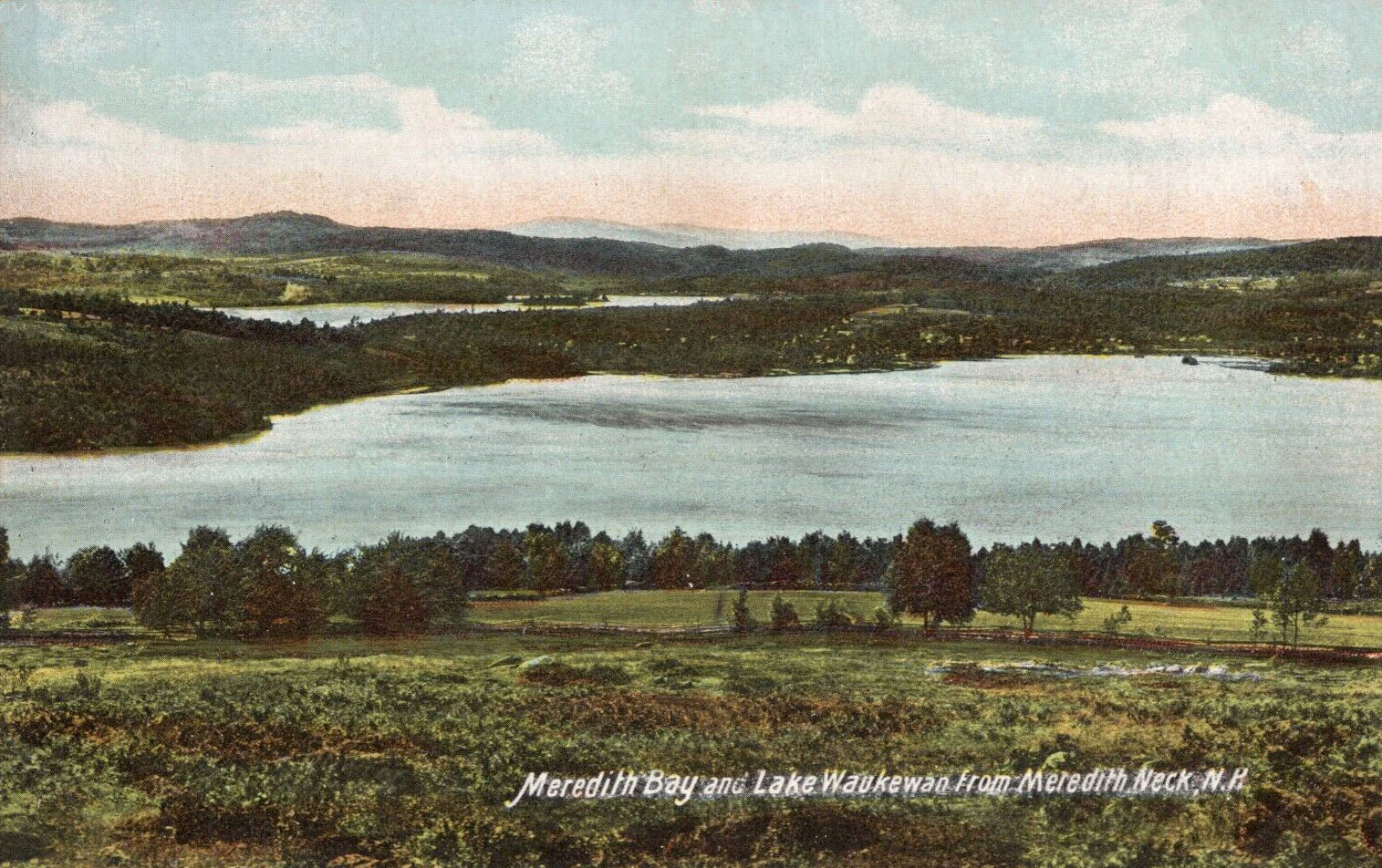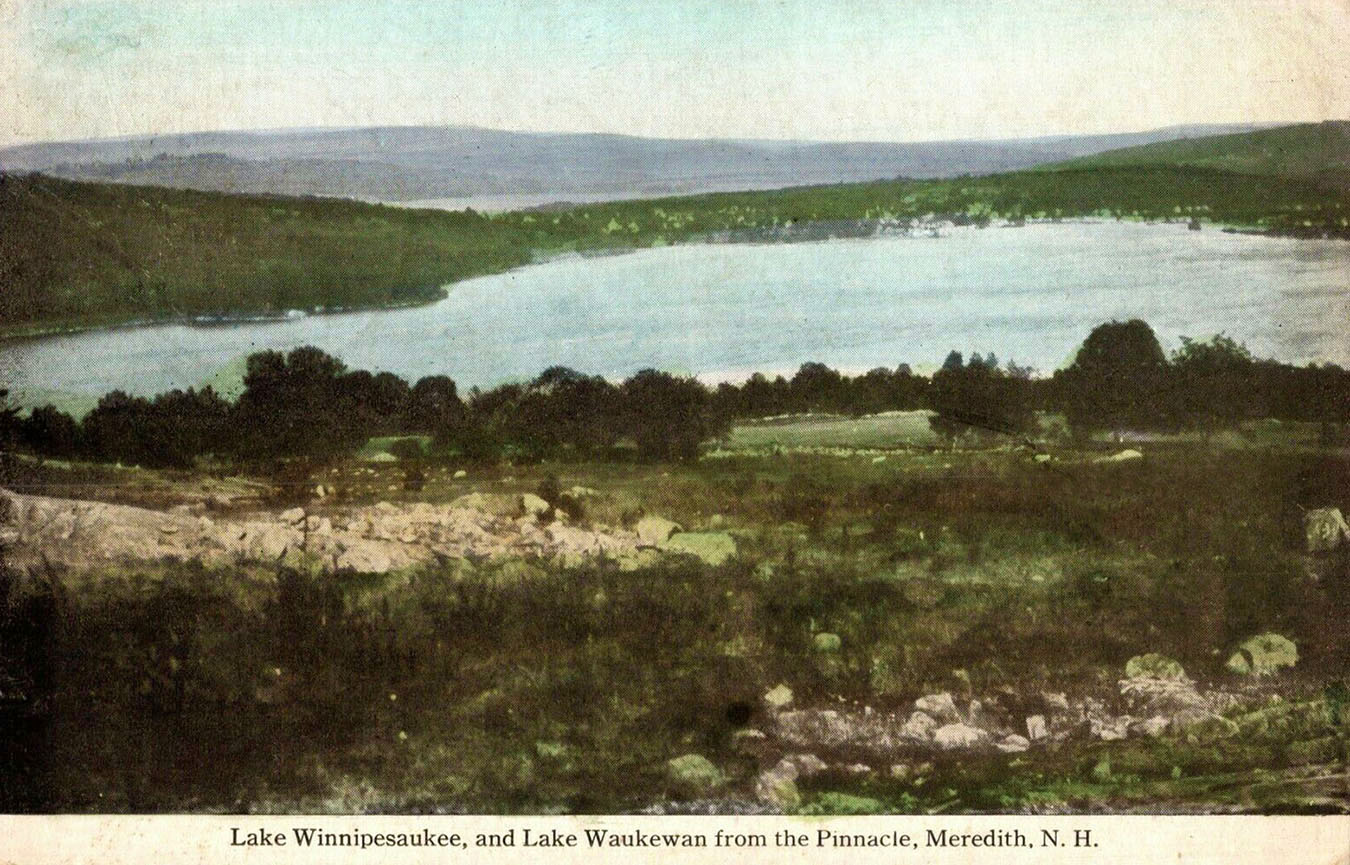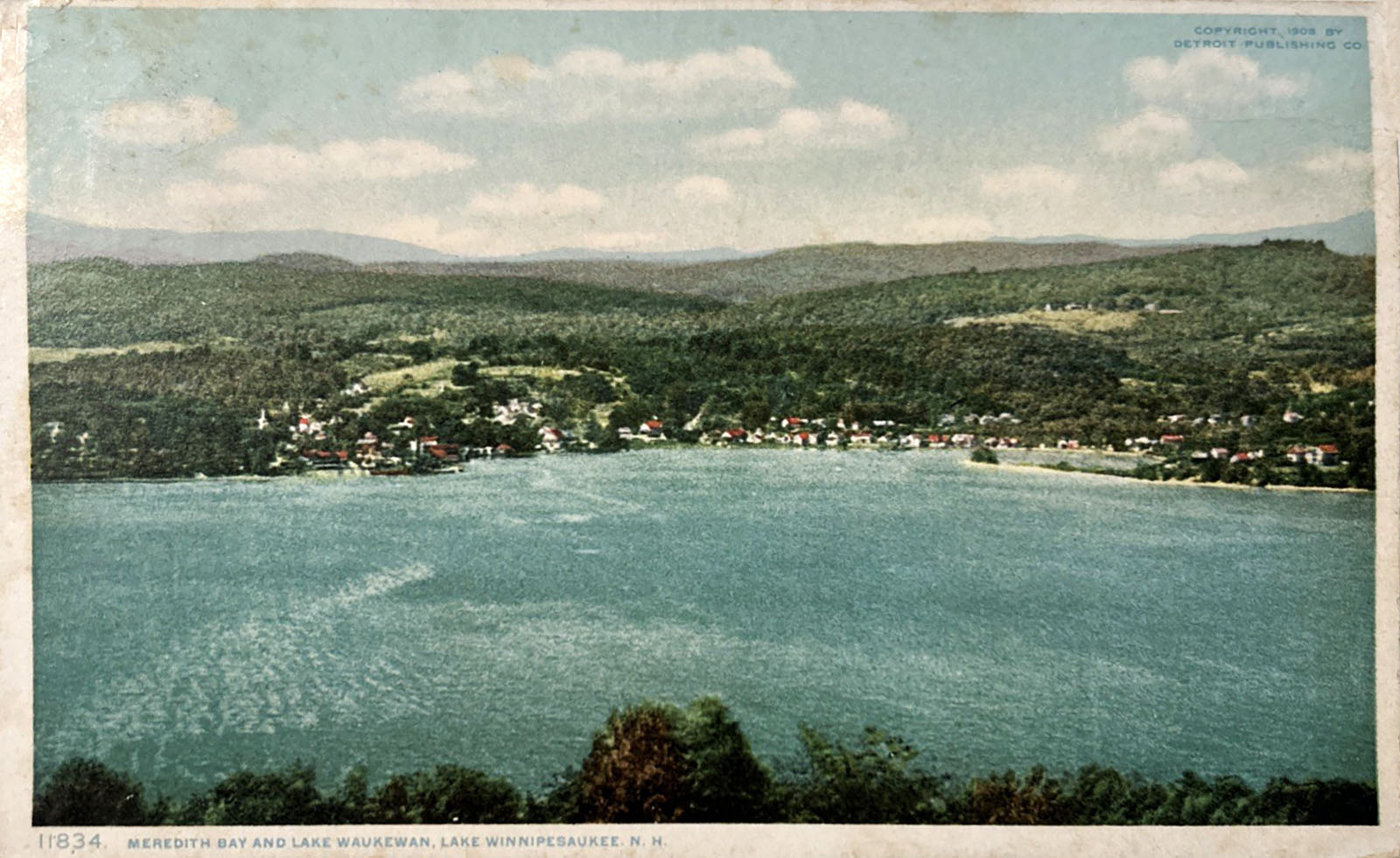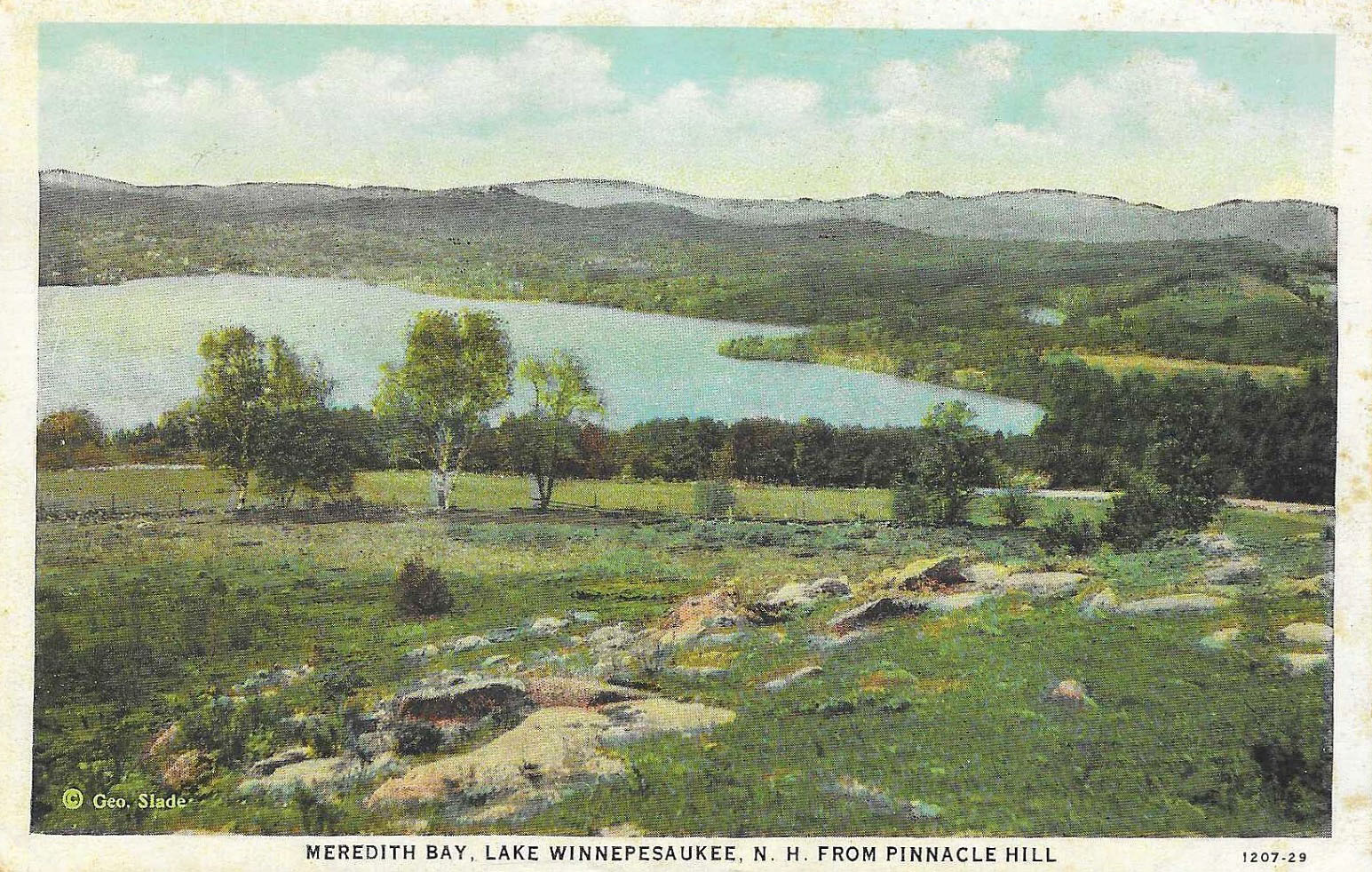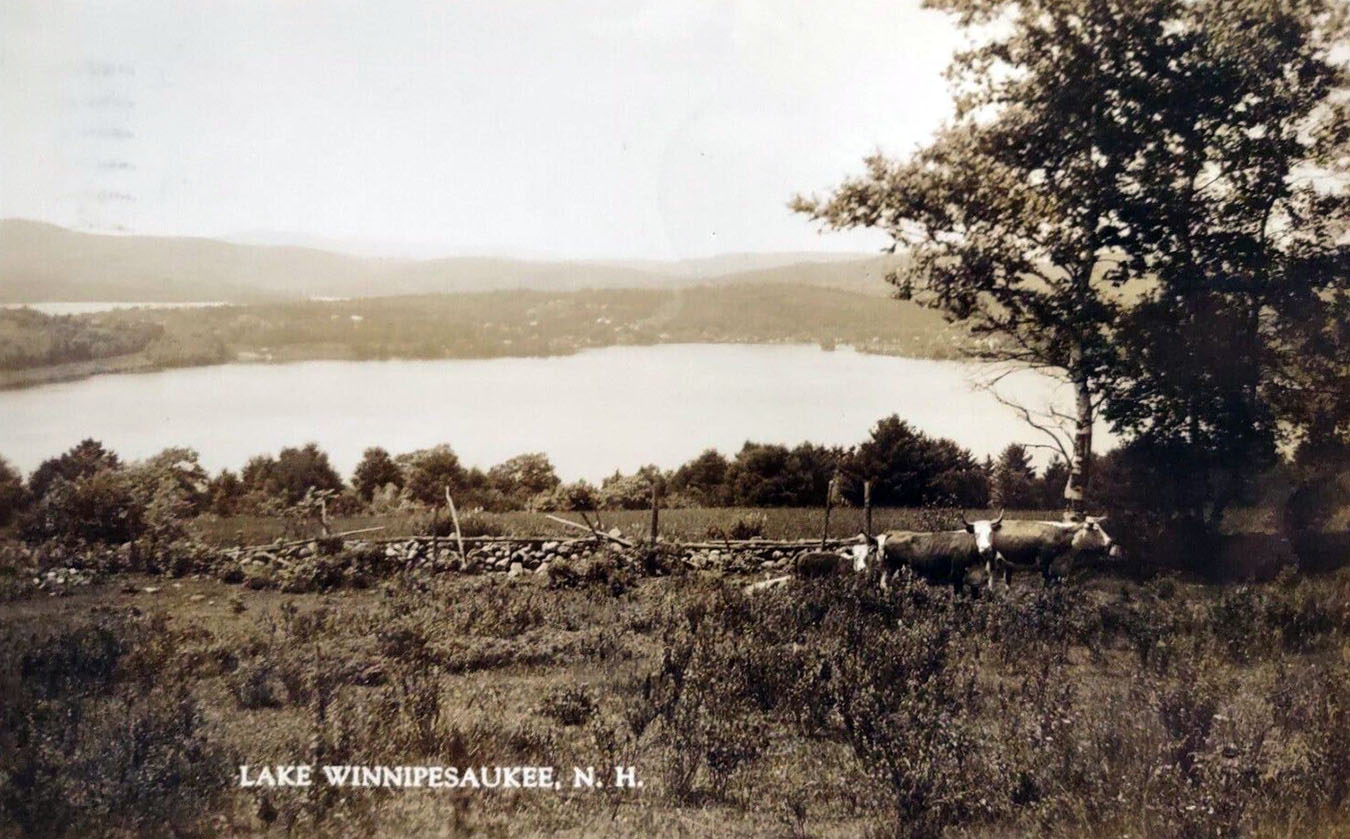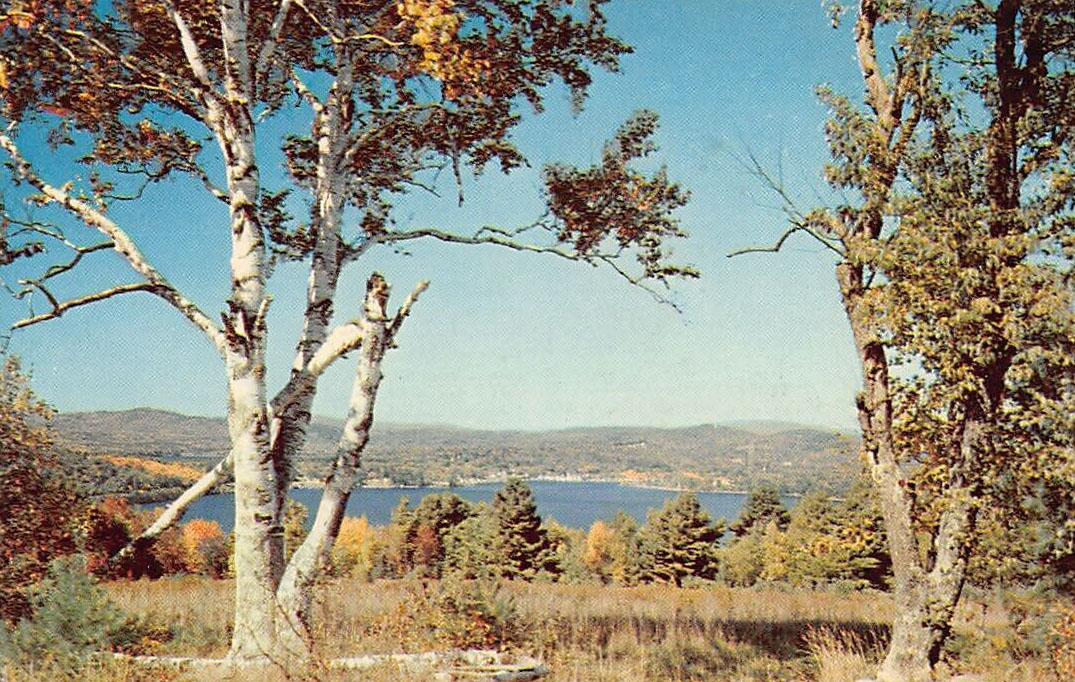Pinnacle Hill
Views Towards the Tip of Meredith Neck
Views from Pinnacle Hill towards the tip of Meredith Neck, from long ago. The islands viewed in the center of the photo, from closest to furthest, are Oak, then Pitchwood, then Governors. Stonedam Island is the hilly island to the left. Stonedam Island was named “Koabegosenmek” by the local Native American tribe of Abenakis, meaning “pine pitch rock place”. Most of the island is now protected by the Lakes Region Conservation Trust, and it sports several walking trails. The first three postcards are identical photos, but with different colorization schemes.
Views Toward Cummings Cove
A different viewpoint from Pinnacle Hill. This is a view looking at Cummings Cove. Pitchwood is the round island in the middle of the picture. Weirs Beach would be off to the far right, past Spindle Point.
Views Towards Lake Waukewan
Views of Lake Waukewan from Pinnacle Hill. The large body of water in the foreground is Meredith Bay, with the town of Meredith to the right. Lake Waukewan is the body of water in the distance. Only a sliver of Lake Waukewan can be seen.
Above, a real photo postcard of Meredith Bay and Lake Waukewan, postmarked in 1941. Note the cows in the foreground.
The Pinnacle Park Zoo
In the 1920s and 1930s, there was a zoo located on Pinnacle Hill known as the Pinnacle Park Zoo. It is at location #16 on a 1927 tourist map, seen here. Charles Roberts created the zoo. Roberts owned Pinnacle Farm, whose products were sold in town, at his Robert’s Market grocery store and butcher shop at the center of Meredith.
The road to the zoo continued up Pinnacle Hill almost to the top, where there was room to park, walk through a gate, and climb the last few feet to the summit rock, a large boulder with a 360° view, as seen in the many varied postcards and photos above. In the winter, there was even a challenging, steep and narrow ski trail to ski down to the lake.
The zoo featured a plethora of animals of many different types. Exotic animals included a “wild cat from Africa”; baboons and monkeys; adders and an alligator. Local forest animals included raccons, mink, skunk, squirrels and spotted deer. From the American West, there were buffaloes (bison), prairie dogs, and jack rabbits. Domesticated animals on display included sled dogs; Aberdeen Angus cattle; Angora rabbits; a donkey; two billy goats; and two blue pigs. There were also many types of birds on display: golden and silver pheasants; wild and domestic geese; peacocks; pigeons and doves; and “prize-winning” species of various fowls.
Roberts also built a large history pavilion alongside the zoo. Featured were various antiques “used by the first settlers”: a doctor’s medicine bag; china; prints and samplers; wooden furniture; chests; wool and flax spinning wheels; farm tools; and braided rugs. The other historical focus was on early transportation: a vintage Pierce-Arrow automobile; a horse-drawn chaise; a hand-pump fire engine; and the jewel of the museum, the Senter House’s Concord Coach stagecoach, which had transported many a passenger between the Meredith train station and the hotel in Center Harbor.
The final additions to the Pinnacle Hill attraction were shuffleboard and horseshoe courts; rifle and archery ranges; and a tea house.
The great New England hurricane of September, 1938, extensively damaged the zoo and its historical exhibits. Rather than rebuild, Roberts called it quits, dispersing his animals and donating his historical items. The Concord Coach wound up with the Sandwich Historical Society, where it is still on display today at the Society’s Quimby Transportation Museum, and is rolled out every year for the Sandwich Fair parade.










